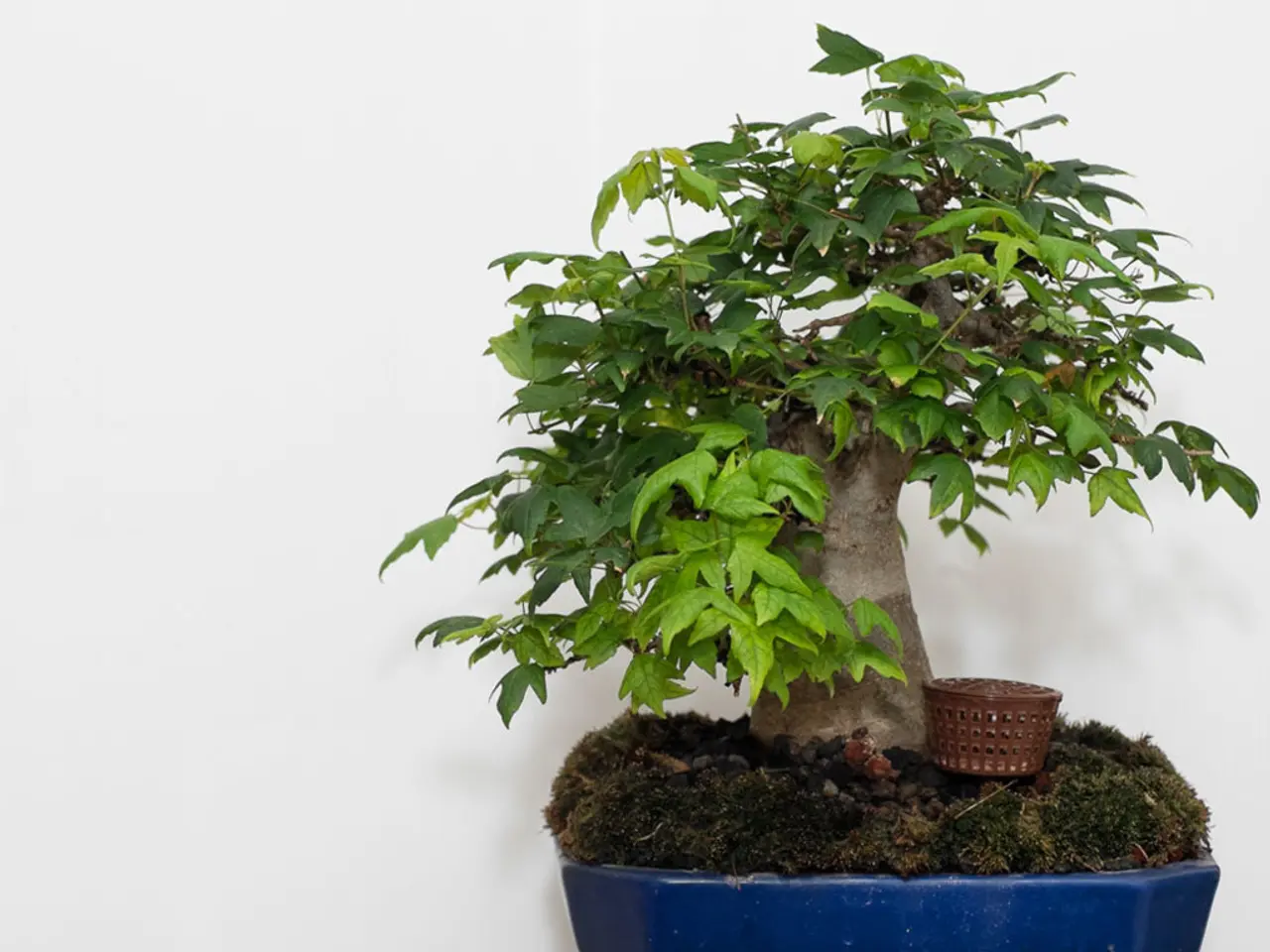Bonsai Training Sessions: Practical Advice and Skill-building Methods
In the tranquil domain of bonsai cultivation, the art converges with the gentle whispers of wisdom, guiding enthusiasts towards a profound understanding of the intricate dance between life, beauty, and patience. This miniature world of trees, nurtured with love and care, is a testament to the harmony between human and nature.
Common mistakes for bonsai enthusiasts include insufficient watering, inadequate pruning, and ignoring seasonal needs. To master the craft, hands-on practice and expert instruction are essential. Through techniques such as pinching, pruning, and wiring, enthusiasts can control branch growth, promote backbudding, and create a rich, layered silhouette.
The bonsai caretaker's journey is likened to a serene stroll through a misty forest, where each deliberate step nurtures life. By understanding the principles of ramification, artists can create a balanced, harmonious structure that accentuates the tree's natural beauty. Enhancing ramification and branching techniques are essential components of bonsai styling, enabling artists to craft intricate, visually appealing frameworks that support the tree's overall aesthetic and structural integrity.
Bonsai enthusiasts can coax their miniature trees into producing vibrant flowers and luscious fruits by calibrating pruning schedules and techniques according to species-specific needs, balancing growth, and making seasonal adjustments. By understanding the specific nutrient requirements of bonsai species, practitioners can stimulate the tree's reproductive cycle and encourage the formation of flowers and fruits.
Repotting frequency depends on factors such as bonsai species, age, and growth rate, with most bonsai trees requiring repotting every 2-5 years to maintain healthy growth, prevent root bound conditions, and refresh soil nutrients. Many unconventional tree species can be successfully cultivated as bonsai with careful consideration of their unique needs, growth patterns, and adaptability to containerized conditions.
Bonsai trees can be grown indoors with limited natural light exposure by selecting species tolerant of low light, utilizing grow lights, and maintaining precise temperature and humidity control. To protect bonsai from extreme temperatures and weather, practitioners can provide wind protection, use thermal blankets, and select species tolerant of temperature fluctuations.
Preserving the deadwood with preservatives or sealants can help maintain its integrity and prevent further decay. Deadwood features add depth, texture, and visual interest to bonsai, and demand a deep understanding of bonsai development and a keen sense of aesthetics. Bonsai artists create deadwood features as a hallmark of advanced design, requiring deliberate pruning strategies.
Common signs of bonsai pest infestations include tiny eggs, webbing, or actual insects on the tree. Treatment involves isolating the tree, pruning infested areas, and applying insecticidal soap or neem oil according to product instructions.
In bonsai care workshops, enthusiasts can learn the art of promoting flower and fruit production through deliberate fertilization and pruning techniques. They can also refine their skills in enhancing ramification and branching through practical guidance and techniques.
The search results do not provide information about the author or the features of a newly developed bonsai training app representing a revolution in bonsai cultivation. With every branch pruned, every drop of water measured, and every nutrient balanced, the miniature tree flourishes, symbolizing the harmony between human and nature. By nurturing these living works of art, bonsai enthusiasts embark on a journey that connects them with the wisdom of ages past and the beauty of the natural world.
Read also:
- Peptide YY (PYY): Exploring its Role in Appetite Suppression, Intestinal Health, and Cognitive Links
- Toddler Health: Rotavirus Signs, Origins, and Potential Complications
- Digestive issues and heart discomfort: Root causes and associated health conditions
- House Infernos: Deadly Hazards Surpassing the Flames








